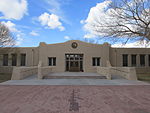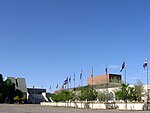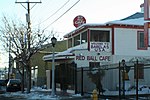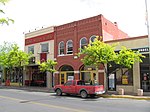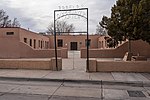El Modelo
1929 establishments in New MexicoMexican-American culture in Albuquerque, New MexicoRestaurants established in 1929Restaurants in Albuquerque, New Mexico

El Modelo (originally El Modelo Tortilla Factory) is a Mexican and New Mexican cuisine restaurant in the city of Albuquerque, New Mexico, which was founded in 1929. It is located in the historic neighborhood of Barelas.
Excerpt from the Wikipedia article El Modelo (License: CC BY-SA 3.0, Authors, Images).El Modelo
2nd Street Southwest, Albuquerque Barelas
Geographical coordinates (GPS) Address External links Nearby Places Show on map
Geographical coordinates (GPS)
| Latitude | Longitude |
|---|---|
| N 35.0685742 ° | E -106.6524554 ° |
Address
El Modelo
2nd Street Southwest 1715
87102 Albuquerque, Barelas
New Mexico, United States
Open on Google Maps

